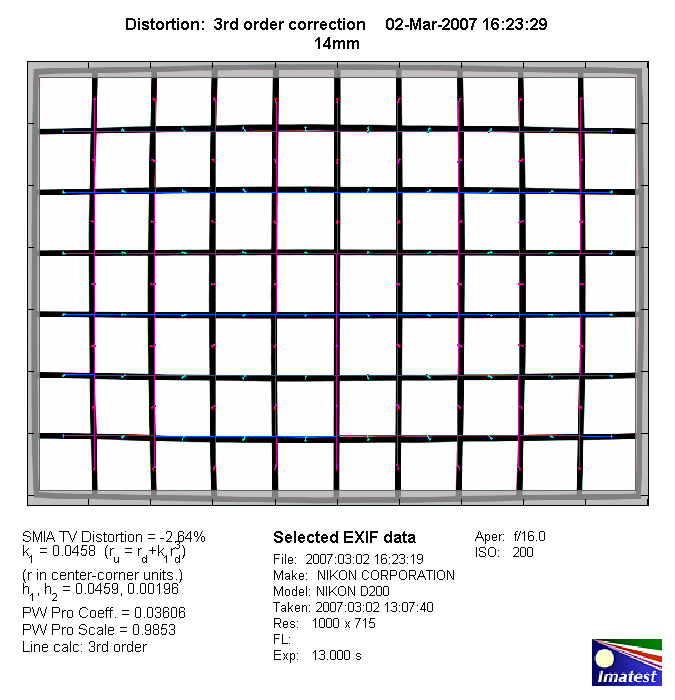|
Nikkor AF 14mm f/2.8 D ED - Review / Test Report - Analysis |
|
Lens Reviews -
Nikon / Nikkor (APS-C)
|
|
Page 2 of 3
Distortion
Ultra-wide angle lenses tend to produce some barrel distortion and the Nikkor is no exception here.
At about 2.6% the problem is not really better than for most zoom lenses in this range. However,
the characteristic is less wavy so it is easy to correct the problem via imaging tools.

The chart above has a real-world size of about 120x80cm.
Vignetting
The AF 14mm f/2.8D ED is a full-frame lens so it can take advantage of a sweet spot effect
on the D200. However, at wide-open aperture things aren't all that rosy with a light fall-off
of 1.35EV. This is usually correctable but not overly impressive nonetheless. From f/4 onwards
the vignetting is very well controlled and better compared to corresponding zoom lenses in this range.

MTF (resolution)
The Nikkor AF 14mm f/2.8D ED showed a very good although not flawless resolution characteristic
in the lab. The center performance of the lens is stellar straight from the
max. aperture. However, the border performance isn't quite as impressive specifically
at f/2.8 and also at f/4 - the extreme borders (and these are important with ultra-wides) are
soft here. At f/5.6 and beyond the performance is better with a very good extreme
border quality (just). The sweet spot is at f/8. The lens suffers also from a rather
pronounced field curvature (as opposed to a flat focus plane).
Please note that the MTF results are not directly comparable across the different systems!
Below is a simplified summary of the formal findings. The chart shows line widths per picture height (LW/PH) which can be taken as a measure for sharpness.
If you want to know more about the MTF50 figures you may check out the corresponding Imatest Explanations
Chromatic Aberrations (CAs)
Lateral chromatic aberrations (color shadows at harsh contrast transitions) are high in
absolute terms but well controlled for an ultra wide lens. The characteristic is
rather unusual with relatively high CAs at f/2.8-4 and f/11 and moderate CAs in between.
Nonetheless it is worth to mention that the cheaper Nikkor AF-S 12-24mm f/2.8 ED performs
similar here. At f/2.8 there's also some purple fringing around high contrast spots
(see the horse sample image below).

|